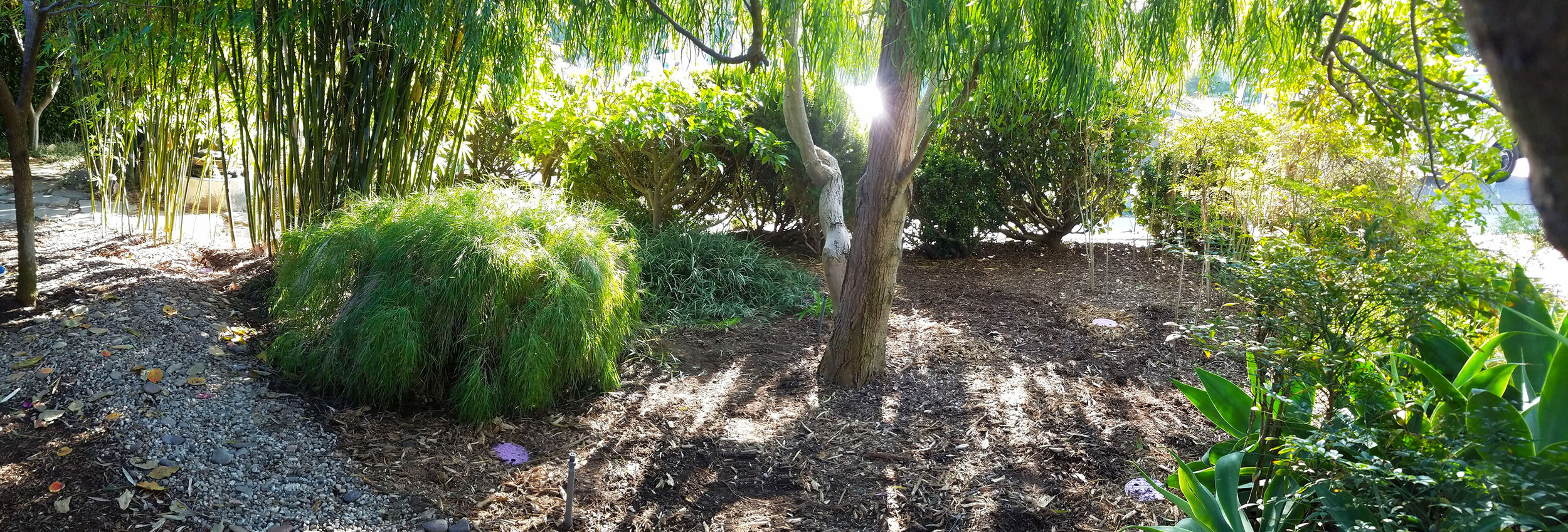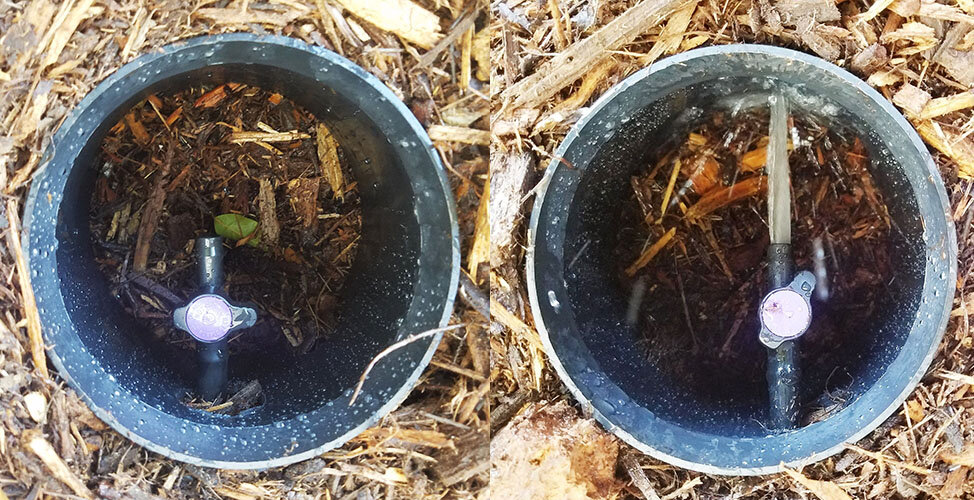
MULCH BASINS
The most common form of greywater irrigation, mulch basins allow greywater to spread into the ground sub-surface, avoiding pooling, runoff and odors.

WHAT ARE THEY?
Mulch basins are trenches dug around the root system of a plant that are filled with coarse woodchip mulch. An essential component of most greywater systems, they are the mechanism by which the greywater is absorbed and infiltrated to the root system of your plants. Water is piped underground and soaks laterally through the basins to the roots via capillary action underground.
Mulch is also a natural filter—it captures and breaks down any organic matter in your greywater through natural processes in the ground. Mulch filtration is a common-sense, natural solution which prevents the need for maintaining high-tech pre-filtration systems.
HOW BIG ARE THEY?
This varies depending on the size and water needs of the plant, the soil type, the number of basins, and the quantity of water we will distribute across the whole system. Average basins are 1’ deep x 1’ wide x 3’ long. Some basins may entirely encircle a plant or irrigate multiple plants. Sometimes they are half-circles or kidney shaped, sometimes we keep them rectangular, depending on your needs and the landscape design.
LANDSCAPE PLANNING
The ideal location of the basin is at the natural dripline of the plant (the edge of the canopy). It is important that you and/or your landscape designers understand which plants are appropriate to irrigate with greywater and plan to aesthetically incorporate mulch basins into the design. We need sufficient space for basins at the dripline of the plant and you should avoid crowding basins with small ornamentals or ground cover.
HOW MUCH MULCH?
For a typical system we deliver a full truckload of woodchips, between 1-2 cubic yards. We use coarse composted woodchips which break down slowly. We will be removing 1-2 cubic yards of soil to dig the mulch basins. This soil needs to be relocated or distributed somewhere else on-site, or have a designated area from where it can be hauled away if desired.
MAINTENANCE
It is important that the valve box, or mulch shield, at each emitter point is clear of excess mulch, dirt and debris. You should have a minimum air-gap of 2 inches between the water outlet and the mulch. We recommend an annual maintenance to test flow, clear and maintain mulch shields.
Over time your mulch will decompose into rich composted soil. This is healthy dirt, but it is no longer effective at absorbing and distributing greywater. We recommend fully re-digging and replenishing your mulch basins every 3-5 years.
As your plants thrive on greywater it is also possible after many years they may out-grow the original basin. Mulch basins may need to be relocated to make room for the expanding root system.





